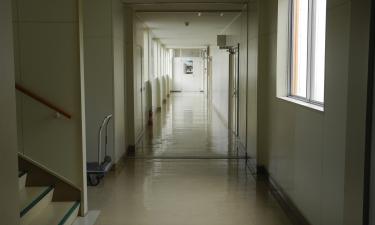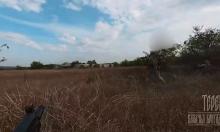New find make archaeologists question Mayan enigma
Francisco Estrada-Belli and his team discovered intact two large masks and jade objects used for rituals in the central square of the city, named Cival, which date to around 150 B.C.
Before being abandoned, the city may have outshone the neighboring site, Holmul, which was at the height of its civilization a thousand years later during the Classic Maya period, he said.
"Cival probably was abandoned after a violent attack, probably by a larger power such as Tikal."
The positioning of buildings in Cival toward the sunrise at the equinox suggests that they were used to measure time. The city had an "important astronomical function," according to Estrada-Belli.
Two stucco masks, each measuring five meters by three (15 feet by nine), are among the most stunning discoveries, reports discovery.com According to BBC exploration of the 2,000-year-old site has caused archaeologists to question the established chronology of the enigmatic Maya civilisation. The city, Cival, thrived in what is generally considered the "pre-classic" period - but it bore the hallmarks of the more advanced "classic" period. The excavations were supported by the National Geographic Society.
Cival had pyramids and a large complex surrounding a central plaza. The buildings were carefully positioned so they faced the sunrise in the equinox. According to Professor Estrada-Belli, this suggests they were used to measure time.
"It had an important astronomical function," Professor Estrada-Belli said. "It's not coincidence that the central axis of the main buildings and the plaza is oriented to sunrise at the equinox." The lead archaeologist said his most exciting find turned up in a dank tunnel dug in the side of a pyramid.
While he was inspecting the tunnel, he reached into a crack in the wall - and felt a curved piece of stucco. Digging to it from the other side, he found a well-preserved giant face of a Maya deity. The 4.5m by 3m (15ft by 9ft) stucco mask had one eye visible and the mouth squared, with snake's fangs in its centre. "The mask's preservation is astounding," Professor Estrada-Belli said. "It's almost as if someone made this yesterday."
Excavations this April revealed a second, apparently identical, mask on the other side of a set of stairs.
Professor Estrada-Belli believes the masks flanked the staircase of the pyramid that led to the chamber, serving as the backdrop for a ritual involving the Maya king.
At the ancient city of San Bartolo, another team of archaeologists has found a mural over 2,000 years old that depicts in great detail the Maya myth of creation.
"In terms of pre-classic Maya, this is basically a Sistine Chapel," said Karl Taube, a Maya iconography expert at the University of California at Riverside.
The Maya version of creation centers around the maize god, who descended to the underworld where the lords of death killed him. Years later, his sons defeated the lords of death and resurrected the maize god. His return to the surface of the Earth marks the first day of the Maya world, inform nationalgeographic.com
Subscribe to Pravda.Ru Telegram channel, Facebook, RSS!




